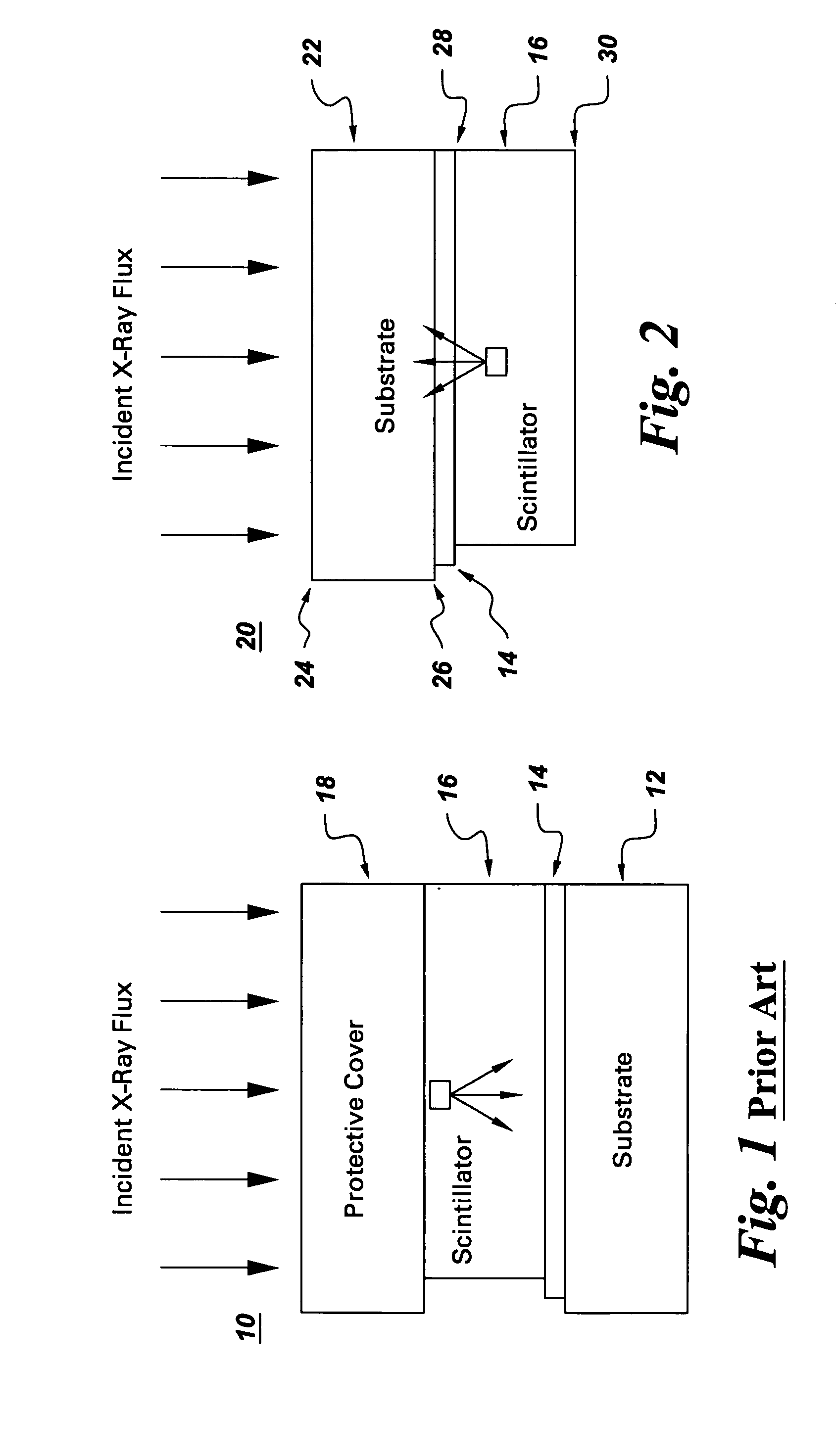Solid-state radiation imager with back-side irradiation
a radiation imager and solid-state technology, applied in the field of solid-state radiation imagers, can solve the problems of image blurring, difficult distance, and the likelihood of spreading away
- Summary
- Abstract
- Description
- Claims
- Application Information
AI Technical Summary
Problems solved by technology
Method used
Image
Examples
Embodiment Construction
[0020]FIG. 1 is a schematic of a cross-sectional view of a solid-state radiation imager 10 such as an x-ray imager according to the prior art. The imager 10 comprises an x-ray opaque substrate 12. In large flat panel imagers (e.g., imagers greater than 10 cm×10 cm), the substrate 12 is typically comprised of glass. An example of an x-ray opaque substrate is a CORNING 1.1 mm 1737 substrate that has been doped with elements having a high atomic number (Z) such as Barium to provide special properties that can withstand stringent manufacturing specification required for semiconductor processing. This type of substrate has a very poor x-ray transmission. For example, the CORNING 1.1 mm 1737 substrate has an x-ray transmission that is less than 15% for a typical radiation spectrum used for mammography x-ray applications and less than 70% for a typical spectrum used for vascular x-ray applications.
[0021] The x-ray imager 10 also comprises a pixelated array of photosensitive elements 14 di...
PUM
 Login to View More
Login to View More Abstract
Description
Claims
Application Information
 Login to View More
Login to View More - R&D
- Intellectual Property
- Life Sciences
- Materials
- Tech Scout
- Unparalleled Data Quality
- Higher Quality Content
- 60% Fewer Hallucinations
Browse by: Latest US Patents, China's latest patents, Technical Efficacy Thesaurus, Application Domain, Technology Topic, Popular Technical Reports.
© 2025 PatSnap. All rights reserved.Legal|Privacy policy|Modern Slavery Act Transparency Statement|Sitemap|About US| Contact US: help@patsnap.com



